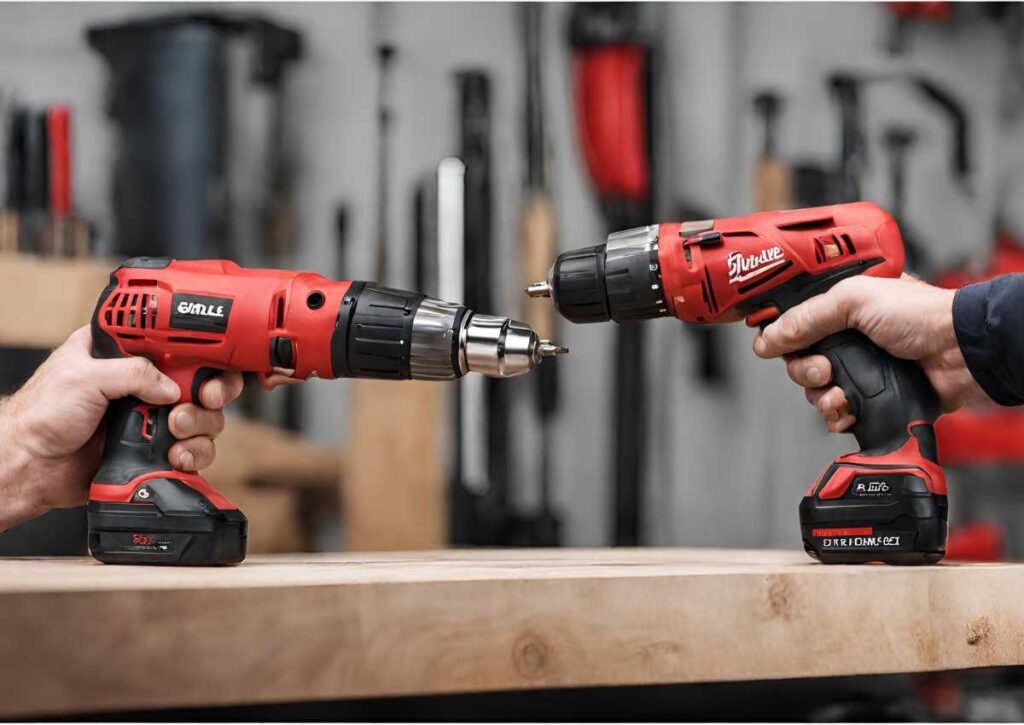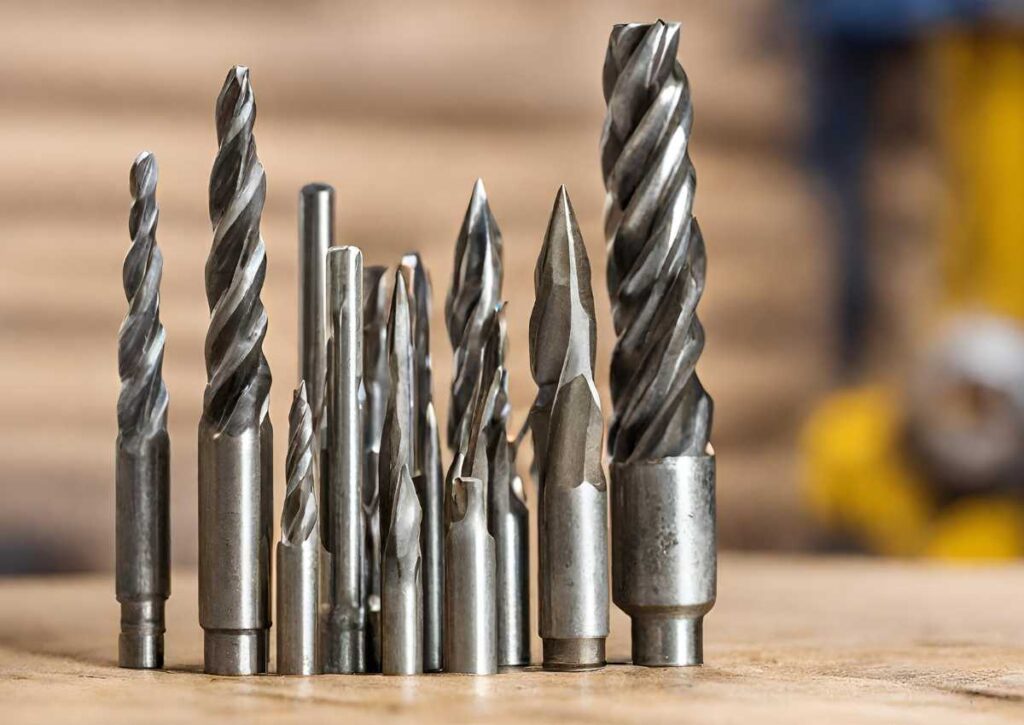Hey there, let’s dive into the world of drills—you know, those handy tools that help you make holes in stuff? Today, I’m here to unravel the mystery behind the numbers 3/8 and 1/2.
The distinction between a 3/8 vs. 1/2 drill mainly centers on their chuck sizes, impacting their power and effectiveness for various drilling applications.
Buckle up, because I’m about to demystify the differences between these two and help you figure out which one might be your best buddy for your next project.
Understanding the Drill Size
First things first, let’s crack the code on these numbers. When you see 3/8 or 1/2 associated with drills, it’s not about the length or the width of the drill itself.
Nope, it’s all about the chuck size! Confused? Don’t worry; the chuck is that part of the drill that holds the bit.
So, when you see 3/8 or 1/2, it’s referring to the maximum diameter of the bit the chuck can hold.
Similarities Between 3/8 and 1/2-Inch Drills

Surprisingly, these two drills share quite a few similarities. They’re both powerhouses designed to get the job done efficiently.
Whether it’s drilling into wood, metal, or even concrete, both 3/8 and 1/2-inch drills can handle the task.
Plus, they come with various speed settings, giving you control over how fast or slow you want to drill.
Differences Between 3/8 and 1/2-Inch Drills
Now, let’s talk differences. The biggie here is the chuck size: the 1/2-inch drill has a bigger chuck, allowing it to accommodate larger bits than the 3/8-inch one.
This means if you’re dealing with more extensive drilling tasks or tougher materials, the 1/2-inch drill might give you a bit more oomph.
Cost Considerations

Factors Influencing Price
- Size Variation: Generally, 1/2-inch drills might be slightly more expensive due to their larger size and potential for higher torque.
- Brand and Features: The cost can vary significantly based on the brand, additional features (like variable speed settings and brushless motors), and overall build quality.
- Power and Performance: Drills with higher power and performance capabilities may come at a premium price point compared to basic models.
Cost Comparison Tips
- Initial Investment: Assess the upfront cost of both 3/8-inch and 1/2-inch drills to understand the immediate budget impact.
- Long-Term Value: Consider durability and longevity. Sometimes a slightly higher initial investment can save money over time by offering a more durable tool.
- Versatility and Applications: Factor in the range of tasks each drill can handle. A more versatile drill might justify a higher initial cost.
- Quality and Warranty: Look at warranties and overall build quality. Higher-quality drills may have better warranties and require less frequent maintenance or replacement.
- Assess Your Needs: Align the drill cost with your specific project requirements and frequency of use. Sometimes, a more affordable option might suffice for occasional use.
Bottom Line
- Budget Consciousness: Choose a drill that balances cost-effectiveness with the features and durability you need.
- Investment Perspective: Sometimes, spending a bit more initially could lead to long-term savings by avoiding frequent replacements or repairs.
Remember, the price tag doesn’t always reflect the overall value. Consider the bigger picture by factoring in quality, performance, and long-term reliability when making your purchase decision.
3/8 vs 1/2 Drill Chucks
1: Force
Okay, let’s start with the basics. What does torque mean? It takes torque for a drill to turn something, in this case the drill bit.
How much torque do these drills have? Drills that are 1/2″ have more torque than drills that are 3/8″.
This means that 1/2′′ drills can put out more torque, which is force, so you can finish the job.
This is why 3/8-inch drills are used for light tasks that don’t need as much force, and 1/2″ drills are used for tougher jobs with harder materials.
1/2 vs 3/8 torque for drill
⅛” drill bits are great for home projects
If torque is the only thing you care about, a 1/2″ drill is the best choice.
Remember to be careful when you use both drills. You should know that a 1/2′′ drill is stronger than a 3/8′′ drill, which can make it more dangerous to use.
2: Quickness
How fast is the drill bit going to spin? The speed of your drill makes all of this possible. Which one is faster? A 1/2″ or a 3/8″?
You might be surprised to learn that a 1/2″ drill is slower than a 3/8″ drill. This is because 1/2″ bits have to move farther to make one turn than 3/8″ bits.
The 1/2′′ bit has less leverage because of this, so it needs more power to turn.
3: How Long Does It Last?
How long a drill lasts depends on a lot of things, like how well it was made, how often it is used, and what materials it is made of. But drills that are stronger tend to last longer.
We already saw that a 1/2″ drill is more powerful because it has more torque. They might last longer than 3/8-inch drills because of this.
But keep in mind that there are many things that can affect how long a drill lasts. You shouldn’t just think about how powerful it is.
So, which one should you use?

Ah, the million-dollar question! The answer lies in what you’re planning to do. If you’re into smaller projects or precision drilling, the 3/8-inch drill might be your go-to pal.
But if you’re handling heavier jobs that require larger bits and more torque, the 1/2-inch drill could be your hero.
Are there other drill sizes?
Absolutely! There’s a whole range of drill sizes out there catering to different needs.
From tiny drills for delicate work to gargantuan ones for heavy-duty construction, there’s a drill for every job under the sun.
Conclusion
Choosing between a 3/8 and 1/2-inch drill boils down to what you’re planning to drill and the kind of power you need.
Both are fantastic tools with their unique strengths, so understanding your project’s demands will help you pick the perfect match.
So, next time you’re eyeing those drills at the store, you’ll know exactly what those numbers mean and which one might be your trusty sidekick for your next DIY adventure. Happy drilling!
FAQs
Can I use a 3/8 drill bit instead of a 1/2-inch drill bit?
You can use a 3/8 drill bit in a 1/2-inch drill, but not vice versa due to size differences.
Is a 1/2-inch drill more powerful than a 3/8-inch one?
Generally, yes, a 1/2-inch drill tends to have more power due to its larger chuck size.
What tasks are better suited for a 3/8-inch drill compared to a 1/2-inch drill?
Tasks requiring precision and finesse are better handled by a 3/8-inch drill, while heavier-duty jobs favor the 1/2-inch drill.
Are there other sizes of drills apart from 3/8-inch and 1/2-inch?
Yes, there’s a wide range of drill sizes catering to various applications and needs beyond the 3/8 and 1/2-inch sizes.









